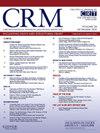TAVR vs. SAVR for severe aortic stenosis in the low and intermediate surgical risk population: An updated meta-analysis, meta-regression, and trial sequential analysis
IF 1.9
Q3 CARDIAC & CARDIOVASCULAR SYSTEMS
引用次数: 0
Abstract
Background
Guidelines recommend transcatheter aortic valve replacement (TAVR) or surgical aortic valve replacement (SAVR) for patients of age > 65 years. The relative risks and benefits of TAVR vs. SAVR in low and intermediate surgical risk remain incompletely described.
Methods
A systematic search of PubMed, Scopus, and Cochrane Central databases identified randomized controlled trials (RCTs) comparing clinical outcomes of TAVR vs. SAVR in low and intermediate surgical risk.
Results
Ten RCTs (9239 patients, TAVR 50.8 %) were included. TAVR was associated with lower rates of all-cause death or stroke at 30-day (rate ratio [RR] 0.70; 95%CI 0.55–0.89; p = 0.003; I2 = 26 %) and 1-year (RR 0.77; 95%CI 0.60–0.98; p = 0.033; I2 = 54 %) follow-up. Bleeding complications, new-onset atrial fibrillation (AF), acute kidney injury (AKI), and severe patient-prosthesis mismatch (PPM) were lower with TAVR at 30 days and 1-year. Permanent pacemaker implantation, aortic valve reintervention, major vascular complications, and paravalvular leak (PVL) were significantly higher with TAVR at 30-day and 1-year follow-ups. Rates of all-cause death, stroke, MI, endocarditis, and rehospitalization were comparable between the groups at 30-day and 1-year follow-up.
Conclusion
In patients with severe AS and low to intermediate surgical risk, TAVR is associated with reduced rates of all-cause death or stroke, bleeding, new-onset AF, AKI, and severe PPM compared to SAVR. However, despite these short-term benefits, higher rates of permanent pacemaker implantation, PVL, and reintervention raise significant concerns about the long-term safety of TAVR, particularly for younger, lower-risk patients.

TAVR vs. SAVR治疗中低手术风险人群重度主动脉瓣狭窄:一项最新的荟萃分析、荟萃回归和试验序列分析
背景:指南推荐经导管主动脉瓣置换术(TAVR)或手术主动脉瓣置换术(SAVR)治疗年龄在bb0 ~ 65岁的患者。TAVR与SAVR在中低手术风险中的相对风险和益处仍然没有完全描述。方法:系统检索PubMed、Scopus和Cochrane Central数据库,确定随机对照试验(rct),比较TAVR与SAVR在中低手术风险中的临床结果。结果:纳入10项rct(9239例,TAVR 50.8%)。TAVR与30天全因死亡或卒中发生率较低相关(率比[RR] 0.70;95%可信区间0.55 - -0.89;p = 0.003;I2 = 26%)和1年(RR 0.77;95%可信区间0.60 - -0.98;p = 0.033;I2 = 54%)随访。出血并发症、新发心房颤动(AF)、急性肾损伤(AKI)和严重的患者-假体不匹配(PPM)在30天和1年的TAVR中较低。永久性起搏器植入、主动脉瓣再介入、主要血管并发症和瓣旁漏(PVL)在30天和1年的随访中显著高于TAVR。在30天和1年的随访中,两组之间的全因死亡率、卒中、心肌梗死、心内膜炎和再住院率具有可比性。结论:在严重AS和中低手术风险的患者中,与SAVR相比,TAVR与全因死亡或卒中、出血、新发房颤、AKI和严重PPM的发生率降低相关。然而,尽管有这些短期益处,但较高的永久性起搏器植入率、PVL和再干预率引起了对TAVR长期安全性的重大担忧,特别是对于年轻、低风险的患者。
本文章由计算机程序翻译,如有差异,请以英文原文为准。
求助全文
约1分钟内获得全文
求助全文
来源期刊

Cardiovascular Revascularization Medicine
CARDIAC & CARDIOVASCULAR SYSTEMS-
CiteScore
3.30
自引率
5.90%
发文量
687
审稿时长
36 days
期刊介绍:
Cardiovascular Revascularization Medicine (CRM) is an international and multidisciplinary journal that publishes original laboratory and clinical investigations related to revascularization therapies in cardiovascular medicine. Cardiovascular Revascularization Medicine publishes articles related to preclinical work and molecular interventions, including angiogenesis, cell therapy, pharmacological interventions, restenosis management, and prevention, including experiments conducted in human subjects, in laboratory animals, and in vitro. Specific areas of interest include percutaneous angioplasty in coronary and peripheral arteries, intervention in structural heart disease, cardiovascular surgery, etc.
 求助内容:
求助内容: 应助结果提醒方式:
应助结果提醒方式:


